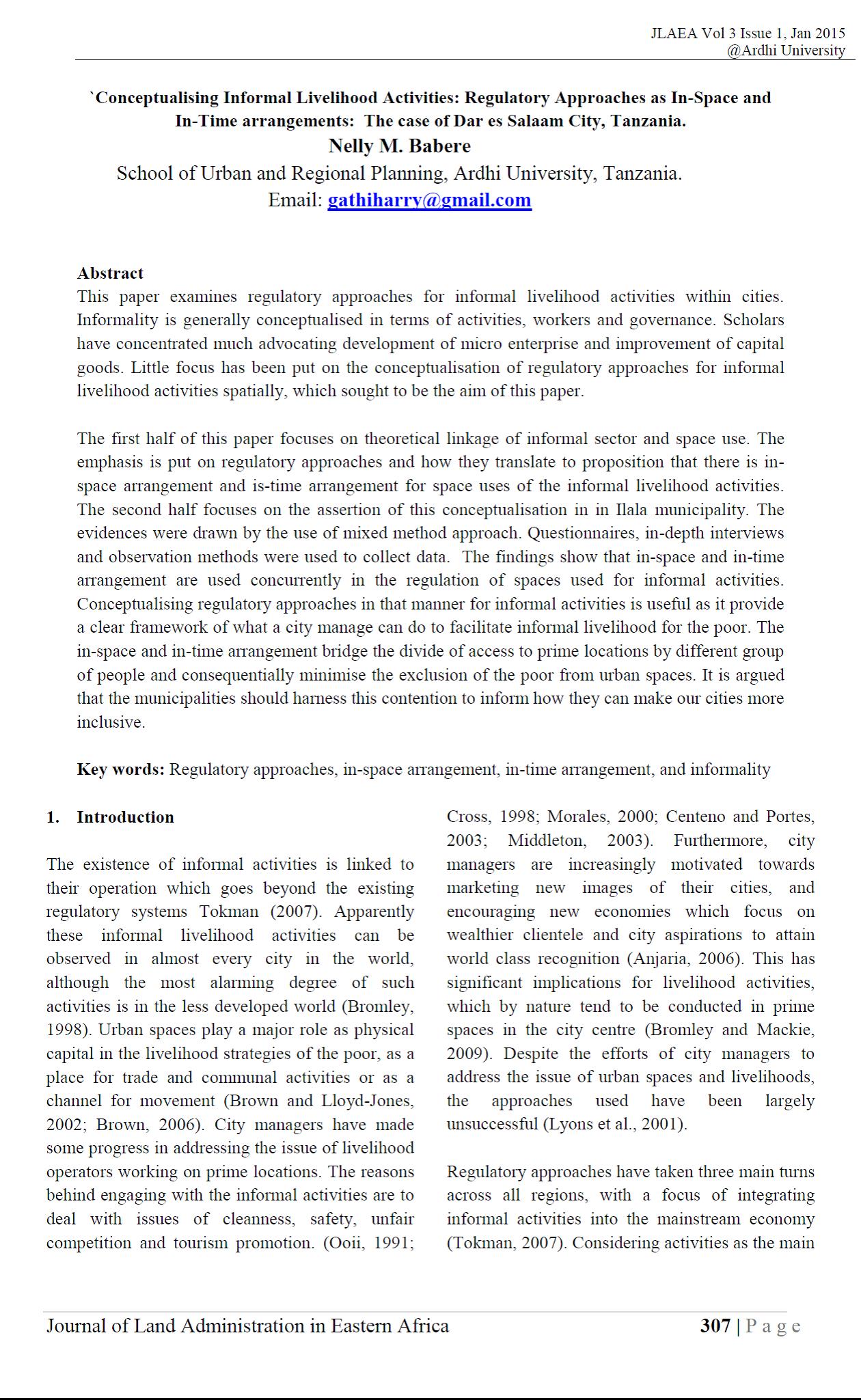Resource information
This paper examines regulatory approaches for informal livelihood activities within cities. Informality is generally conceptualised in terms of activities, workers and governance. Scholars have concentrated much advocating development of micro enterprise and improvement of capital goods. Little focus has been put on the conceptualisation of regulatory approaches for informal livelihood activities spatially, which sought to be the aim of this paper.
The first half of this paper focuses on theoretical linkage of informal sector and space use. The emphasis is put on regulatory approaches and how they translate to proposition that there is inspace arrangement and is-time arrangement for space uses of the informal livelihood activities. The second half focuses on the assertion of this conceptualisation in in Ilala municipality. The evidences were drawn by the use of mixed method approach. Questionnaires, in-depth interviews and observation methods were used to collect data. The findings show that in-space and in-time arrangement are used concurrently in the regulation of spaces used for informal activities. Conceptualising regulatory approaches in that manner for informal activities is useful as it provide a clear framework of what a city manage can do to facilitate informal livelihood for the poor. The in-space and in-time arrangement bridge the divide of access to prime locations by different group of people and consequentially minimise the exclusion of the poor from urban spaces. It is argued that the municipalities should harness this contention to inform how they can make our cities more inclusive.


